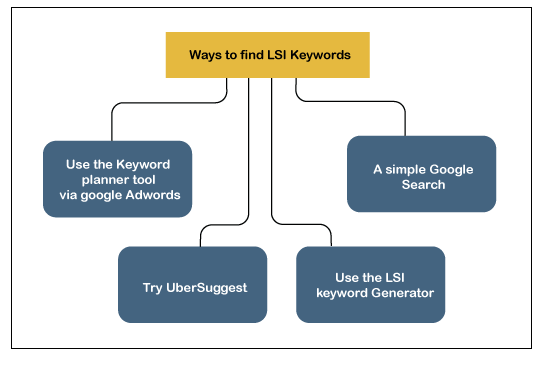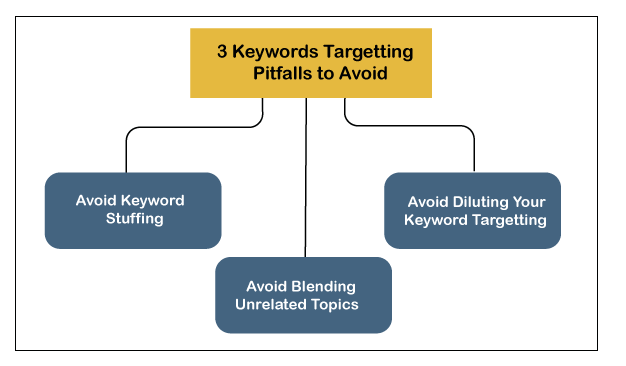What is Latin Semantic IndexingLatent Semantic Indexing is also known as Latent Semantic Analysis. Latent Semantic Indexing is a method which we use for expanding the correctness of information retrieval. It is developed in the 1980s, and it is a mathematical method. In Latent Semantic Indexing, there is a technique named "Singular Value Decomposition," which is used in order to scan unstructured data within the documents and recognize the relationships between the concepts contained therein. In simple words, to improve the understanding of the information, it finds the hidden associations between words. This took an important step forward text comprehension as it was responsible for the contextual nature of the language. The technology which we used earlier has been struggling with the use of synonyms which characterizes the use of natural language, as well as changes in meanings that came with new surroundings. For example, the terms 'Hot' and 'Dog' look easy to understand, but many definitions depend on how they are used. Put both the terms together, and you will get an entirely new concept. So how can we train a machine to adapt to these specifics? That's an issue that has been troubling great minds for centuries, and the Latent Semantic Indexing helped computers to begin understanding its use. With static content and small documents, it works well, which was great for its primary purposes. With the help of LSI (Latent Semantic Indexing), you can make the cluster of the documents on the basis of their thematic commonalities, which was so helpful for the early search engine. What are LSI Keywords?LSI keywords are the keywords based on the idea that reinforcing your topic or theme by using similar keywords throughout your content can support to improve the overall performance of the SEO. Because we want to end up ranking one keyword, it sounds reasonable that you can rank for a related keyword to that. Benefits of Using LSI KeywordsThere are following benefits of LSI keywords:
How to Create LSI KeywordsIn the market, there are various "premium" tools for creating LSI keywords, but to venture into LSI, a business does not need to incur too much cost. Several free tools can help you create LSI keywords for your website:
1. Google Autocomplete: - Simplest method to find the LSI keyword is to select the keyword, which is the main advertisement place in the Google search bar. As you type in the search bar, automatically, Google offers you the best match phrases or list for your primary keywords. 2. LSI Graph: - It is a tool that is used for generating an LSI graph which is a free SEO tool. We can use this tool very easily; just type the keyword in the search bar, and then the tool will generate a relevant list of keywords. 3. Niche Laboratory: - The Niche Laboratory keyword tool provides you the keywords suggestions, website competition matrix, website meta keywords, website page titles, top- ranking website, and website meta description. It is a useful tool to find great matches for LSI keywords and gives the idea about the competitor's traffic-driven keywords. The LSI keyword's correct tool depends on your goals, your content management system, and your advertising strategy for the search engine. Although there is a need to spend money on the premium LSI tools to generate an effective result. How to Use LSI KeywordsThe LSI keywords must be added all over the page if not only your website, but the usage must sound suitable and natural. Few of the LSI keywords may be the synonyms for the main keywords, so they can be replaced for your main keywords easily. There are several main places where you must use your LSI keywords:
Try not to over-optimizing your site for any specific keyword, like with your main keyword. The overuse of an LSI keyword can be seen as the stuffing of keywords, and it will charge a fine from the search engines. A great thumb rule is each LSI keyword is used only one time on a page. The Importance of LSI KeywordsThe LSI (Latent Semantic Indexing) initial implementation was in response to numerous attempts by the owner of the website to manipulate the SEO. Until the meta tags, page content of LSI were frequently long sets of unnecessarily repeated keywords with no identifiable topic or information. LSI enables search engines to credit quality content on web pages. So, by including semantic related search phrases in the SEO copy of your page, you provide the search engines a great understanding of your product, services, page and company. The use of LSI keywords makes your website visitors and search engines happy. The quality content stays around visitors arrivals, which increases the effectiveness and conversion rate of your website. Ways to Find LSI KeywordsThe ways to find the LSI keywords are:

1. Use the Keyword Planner Tool Via Google AdWords: - If we want to use the keyword planner tool of Google AdWords, then it is must to have access to Google AdWords. Again, we are going to use the example of "silly string". Get started by entering the term into the initial query box. Click on the "Get ideas" button then we will be redirected to the page that provides relevant keywords and an understanding of how competitive search rankings are for such terms. 2. Try Ubersuggest: - Another way to find the LSI keywords is As you already know; it is simple to use the tool to find the LSI keywords. In the same way, we use the Ubersuggest, type the primary keyword on the search bar of the Ubersuggest and then you will get the list of related keywords. 3. Use the LSI Keyword Generator: - Another free tool which is flawlessly made for finding the LSI keywords is the LSI keywords Generator. It uses the similar process like previous tools mentioned. In the search bar, type the term and then click on the "Generate" and select from a range of related keywords. 4. A Simple Google Search: - Google itself is the best way to find LSI keywords. When entering a term in the search query field, the keywords relating to the specific query are automatically displayed. How to Select the Right LSI TermsThere are various steps to select the right LSI terms: Step 1. Understand the Searcher Intent Behind the Keywords It is important that the terms we use for the LSI align with our primary keyword's search intent. This needs a proper understanding about what the people are exactly looking for at the time when they search for the keywords that you target. You do not want to speculate on it. You only want to know about the audience expectations from your content means what the audience want to find out from your content. Step 2. Narrow Your Options Through the Elimination Process Begin by weaving out terms that do not fit. These are the terms that do not relate directly to your post's topic. The ideal LSI keywords are basically to fit under your main keyword. They require to help explain your subject in more depth. They must not be completely different subjects. For Example: - If we want to write a post about "Chevy engine maintenance," we would not wish to load your post along with the images of "classic Chevy cars", In this situation, the keywords which go deeper into Chevy engine maintenance specifics would make a great selection. In this situation, we can remove anything which is not related to the certain facet of Chevrolet engines working. Step 3. Select the Best Options from What is Left In the next step, copy and paste what is left into your preferred keyword tool. Choose terms that have a decent volume of search but less than your primary or main keyword. If you expose the keywords which are more searched than your main topic, then this may be a clue that instead, you should be targeting. This is also crucial to ensure that you are selected directly suitable keyword for your topic. 3 Keyword Targeting Pitfalls to AvoidThe 3 keyword targeting pitfalls to avoid are:

1. Avoid Keyword Stuffing: - The LSI keywords should be used sensibly. It means embedding those terms appropriately to make your content more comprehensive. Just for the shake of it, try to avoid shoehorning terminology into your content. If there is no editorial purpose to include a section around a given word, then discard it. 2. Avoid Blending Unrelated Topics: - Suppose your primary keyword is "Bike Maintenance". Although you also notice that "Car Maintenance" gets huge search volume as well as. Then you decide to write the title of the post as "Best Tips for Bike and Car Maintenance." Maybe something like that could work. But it is more likely that explorers are looking for "bike maintenance" and "car maintenance" are only searching for one or another. In this condition, to serve your readers better, try to write a post on each topic separately. Then you have two great-focused posts on your blog that would nail each audience's particular needs. 3. Avoid Diluting Your Keyword Targeting: - The important thing we have to remember is that only one primary keyword should target your content. For example; if the topic of the blog is "easy bike maintenance," there is no need to write about the "bike's history." No matter that both the terms get high traffic, the bike's history is not directly related to the bike maintenance. Focusing on keywords related to bike maintenance tasks our post would cover, such as tire maintenance, engine maintenance, etc.; Additional Uses of LSI-Latent Semantic IndexingIt is usually accepted that the capability to work with text on a semantic basis is important for modern information retrieval systems. As a result, in the recent year, the LSI use has expanded significantly, as earlier performance and scalability challenges have been overcome. We used LSI (Latent Semantic Indexing) in various applications like text processing and information retrieval, although the primary application of LSI was for automated document categorization and concept searching. Here are some other ways of using LSI:
Increasingly, LSI is being used for eDiscovery (Electronic Document Discovery) to help companies prepare for litigation. In the eDiscovery, it is important that large collections of unstructured text are clustered, categorized, and searched on a conceptual basis. Leading providers have applied concept-based searches using LSI to the eDiscovery process as early as in 2003.
Next TopicTypes of SSL Certificates
|
 For Videos Join Our Youtube Channel: Join Now
For Videos Join Our Youtube Channel: Join Now
Feedback
- Send your Feedback to [email protected]
Help Others, Please Share









